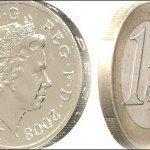 Gold rose on Friday and marked a second consecutive weekly advance amid broad expectations that the Federal Reserve will refrain from scaling back its bond purchasing program until 2014. Gold bulls continued to dominate as most analysts surveyed by Bloomberg expect prices to extend gains into next week. Silver, platinum and palladium tracked golds upward momentum.
Gold rose on Friday and marked a second consecutive weekly advance amid broad expectations that the Federal Reserve will refrain from scaling back its bond purchasing program until 2014. Gold bulls continued to dominate as most analysts surveyed by Bloomberg expect prices to extend gains into next week. Silver, platinum and palladium tracked golds upward momentum.
On the Comex division of the New York Mercantile Exchange, gold futures for settlement in December settled at $1 350.70 per troy ounce on Friday, up 0.03% on the day. The precious metal surged to days high of $1 355.60, the strongest level since September 19, and closed the week 2.6% higher, a second straight weekly advance.
The contract gained 6.1% since October 14 after the temporary solution to the fiscal impasse and lost economic output due to the federal government shutdown fueled speculations the Federal Reserve will delay trimming its quantitative easing program until next year. Those expectations were backed by downbeat unemployment data released throughout the week, indicating a fragile labor market even prior to the fiscal deadlock.
On Tuesday, the U.S. Department of Labor reported that the U.S. economy added 148 000 jobs in September, sharply underperforming a median forecast of 93 economists surveyed by Bloomberg for a 180 000 surge. August’s reading received an upward revision to 193 000 payrolls from initially estimated at 169 000, signalling that the U.S. labor market lost momentum prior to the 16-day government shutdown.
The U.S. unemployment rate, based on a separate Labor Department survey of households, fell by 0.1% to 7.2% in September, beating expectations to remain flat. However, the participation rate, which measures the number of people who are either employed or are actively looking for work, remained the lowest since August 1978 at 63.2%, indicating that the fall in the unemployment rate was based on people who stopped searching for a job.
On Thursday, the Labor Department reported that the number of people who filed for initial unemployment benefits in the week ended October 19 fell by 12 000, underperforming the median estimate of 48 economists surveyed by Bloomberg for a fall to 340 000. The preceding period’s reading received and upward revision to 362 000 from initially estimated at 358 000. The four-week average, which irons out weekly volatility, rose to 348 250 from 337 500 in the previous week.
A spokesman of the government agency said that applications in California remained elevated after the state continued to work through a backlog of data last week amid an earlier computer issue. The department also wasn’t able to determine how many non-federal workers who were furloughed during the 16-day government shutdown applied for jobless benefits. Claims filed by federal employees declined by 25 939 in the week ended October 12.
Jonathan Butler, a precious metals strategist at Mitsubishi Corp. International (Europe) Plc in London, said for Bloomberg: “It’s pretty clear with the shutdown lasting over two weeks and the negative news with the non-farm payrolls that it would be a brave Fed to announce tapering at this stage. The potential for tapering to be delayed plus the residual weakness in the dollar might give some extra oomph to precious metals.”
According to a Bloomberg survey of 40 analysts conducted on October 17-18, the Fed will begin decelerating its monetary stimulus in March. The yellow metal has been tracking shifting expectations for a reduction in Fed’s bond purchases throughout the year and has lost 20% so far in 2013.
The U.S. dollar fell to multi-month lows this week, allowing dollar-priced commodities to regain positions. The U.S. dollar index, which measures the greenbacks performance against a basket of six major trading partners, closed at 79.26 on Friday and settled the week 0.5% lower after shedding 1% the previous five-day period. Prices plunged to 79.07 on Friday, the lowest since September 2012. Weakening of the dollar makes dollar-denominated raw materials cheaper for foreign currency holders and boosts their appeal as an alternative investment.
Also adding to the negative series of data, a preliminary report showed that manufacturing activity in the U.S. fell to a 12-month low and slowed down for the first time since September 2009. The decline was based on weak new orders growth, the slowest in six months, despite a rise in employment.
The Commerce Department reported on Friday that orders for U.S. durable goods rose by 3.7% in September, the most in three months, outperforming analysts’ projections for a 2% advance. August’s reading received an upward revision and inched up to 0.2% from initially estimated at 0.1%.
However, the advance was mainly based on a surge in volatile aircraft orders and robust demand for motor vehicles. Core durable goods, which exclude transportation, fell by 0.1% in September, confounding expectations for a 0.5% rise. August’s contraction was revised down to -0.4% after being initially estimated at -0.1%.
Also fanning negative sentiment, the final October reading of the Thomson Reuters/University of Michigan Consumer Sentiment Index fell to a 10-month low of 73.2 after the 16-day partial government shutdown in October turned Americans more pessimistic about the economy. Analysts expected a retreat to 75.0 from the preliminary estimate of 75.2.
Gold is expected to continue advancing next week, according to a Bloomberg News survey. Seventeen out of 32 participants polled wagered that prices will extend gains through November 1, while nine were bearish, and the remaining six predicted no significant change.
Elsewhere on the precious metals market, silver futures for settlement in December fell by 1.2% on Friday and settled at $22.550 per troy ounce. Prices jumped to a one-month high of $22.752 and closed the week 2.8% higher, a second straight weekly advance. Platinum for delivery in January fell by 0.14% to $1 454.10 an ounce on Friday. The metal surged to a one-month high of $1 457.75 and settled the week 1% higher after adding 4.8% in the preceding five-day periods. Palladium futures for December settlement slipped 0.7% on Friday and settled at $742.90 per troy ounce. The contract advanced by 0.2% this week after surging 5.8% in the previous two.





